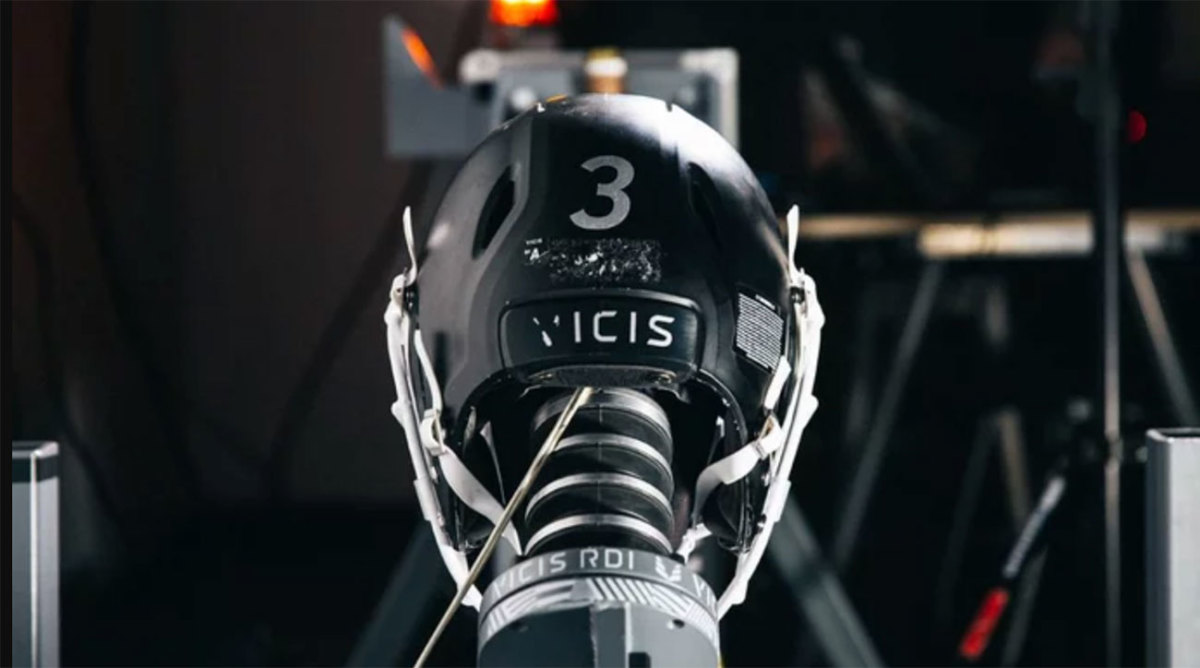Tom Brady Can Keep His Old Helmet–for Now

Around the NFL, players are returning to team facilities for the start of the offseason program. In every locker room, they’ll soon find the new 2018 helmet poster, ranking 34 different helmets according to their ability to reduce the forces that can lead to concussions in laboratory testing. New this year, the poster includes 10 “prohibited” helmets.
Players have had free choice to wear any helmet safe enough to be sold. But for the first time this season, lower-performing helmets according to biomechanical testing supported jointly by the NFL and the NFL Players Association will be disallowed. Six of the 10 "prohibited" helmets cannot be worn in 2018; the other four—three Schutt models and the Riddell VSR-4 that has notably been worn by Patriots QB Tom Brady—can still be used by players who wore them in 2017, but not by new players.
It’s the most recent move as part of the “call to action” issued earlier this year by the NFL’s chief medical officer, neurosurgeon Allen Sills, in response to the nearly 16 percent rise in diagnosed concussions in the NFL from 2016 to 2017.

No helmet can prevent concussions. But the laboratory testing upon which the recommendations are based rates helmets according to how well they mitigate the impact forces that may lead to brain injury, particularly rotational forces that can cause nerve cells to stretch and strain as the head is twisted. Those in the new prohibited category did a poorer job reducing the severity of head impacts and may be either discontinued models or from equipment manufacturers no longer making helmets, like Rawlings.
The increased restrictions are a way of getting more players in better-performing helmets—according to Jeff Miller, the NFL’s executive vice president of health and safety initiatives, more than 200 players wore models in the now-prohibited category last season. But what about those who are grandfathered in? Both Miller and George Atallah, assistant executive director of external affairs for the players union, said on a media call Monday that a gradual phasing out of some of the older models was at the request of the players.
Some of the league’s most recognizable players, among them Brady, Saints quarterback Drew Brees and free-agent running back Adrian Peterson have, at least in past seasons, worn the VSR-4 even as Riddell and other companies rolled out several rounds of newer and improved models. Among the better-performing options include Riddell models with a flexible panel near the crown of the helmet and custom-fit helmet liners made from 3-D scanning; Schutt models with “Tektonic plates” that move independently from the rest of the helmet; and the top two performing helmets in the NFL/NFLPA testing, the ‘17 and ‘18 VICIS Zero 1, which have an entire outer surface made of a flexible polymer.
Many veteran players have preferred to stick with the helmets they’ve always worn, because of fit or comfort or superstition, which has been one limiting factor toward getting more players into the best technology. The new helmet restrictions are an additional step toward changing that--but they leave open a loophole that some high-profile players like Brady may choose to take.
It’s true that a helmet is an imperfect protector in a violent game and that fit is a contributing factor in how well a helmet does its job. Often times you hear players say they have never suffered a brain injury wearing their current model, so why would they change? But a resistance to change is the greatest enemy of a sport that’s at an important crossroads. Change is necessary, whether it comes to requiring players to wear the best possible equipment or accepting the lowering-of-helmet rule that was passed last month.
The Quest for a Better Football Helmet
Miller said they anticipate that all 10 of the prohibited models will be phased out after 2018, and at that point, it won’t affect very many players because they will have chosen better-performing models. Just how many will be affected, though, will be in part up to players’ choice.
Question or comment? Email us at talkback@themmqb.com.
